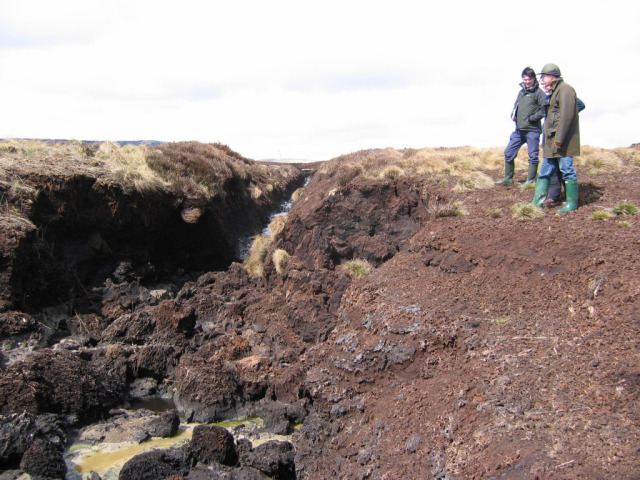
Peatland ACTION case study: What's the connection between peat and Scotland's landscapes?

Peatland ACTION are working to restore degraded peatlands and breathe life back into this habitat, as Project Manager Andrew McBride explains…
In your mind…picture Scotland’s peatlands. No doubt a vision of a large, expansive, remote brown coloured landscape. The image of peatlands as vast wastelands waiting to become productive or to be avoided as ‘bottomless dangerous pits’ is strongly ingrained in our culture. However, in the last few years in Scotland there has been the start of a ‘cultural revolution’ in the perception of peatlands.
Peatlands are closer than we think; literally on our doorsteps, even in cities. There’s a peatland within 5 miles of us all. Part of this cultural change is the acknowledgement in Scotland by the Government, its agencies, researchers and Non-Governmental Organisations that peatlands have so much more to offer when in a good condition and working for us.
It never ceases to amaze me the wonderment of all ages when a peat core containing 1000 years of history is pulled from the bog or the fascination with the specialised plants that inhabit peatlands. Understanding the link between our peatlands and people is paramount to the role peatlands have in our society and their management.
Peatlands are more than visually dramatic landscapes; over 20% of Scotland is covered in peat and they provide us with a wide range of benefits such as carbon storage, filtering water, reducing flood risk and supporting internationally important wildlife! These peatlands are wild spaces where nature and people can thrive.
In some areas, due to historical management, the peat has become bare, eroded and denuded of vegetation. At the PeatlandACTION project we work closely with land managers, awarding funding for restoration activities. These activities reduce water run-off from the peat bog and encourage the bog forming plant, sphagnum, to grow.

Peat grows very slowly – 1mm a year at most – so it can take thousands of years for peatlands to develop. We measure the depth of peat at our restoration sites using a peat probe and take a deep soil sample using a peat core. Measurements tell us what impact our ‘rewetting’ techniques are having and land owners are often surprised at the depth of peat formed on their land. Peat cores are an amazing snapshot of history; close analysis can indicate, for example, plants that thrived in the area centuries ago.

You can see how dark the soil is in a peat core. Peatlands store significant quantities of carbon – 25 times more carbon than all the vegetation of the UK. This carbon is essentially ‘locked in’ to the peat soil and helps to reduce the impact of climate change.
Peatlands in poor and eroding condition contribute to global warming by accelerating the loss of peat and the release of the greenhouse gases methane and carbon dioxide. PeatlandACTION projects are working to ‘re wet’ and vegetate bare peat, restoring the natural peatland ecosystem.

With further funding to deliver restoration activities in 2018 we continue to forge positive partnerships working with a range of land managers – including those in the forestry, sporting and farming sectors – to demonstrate the benefits of healthy peatlands.
For further information, or to get involved with PeatlandACTION
Peatland ACTION case studies: We demonstrate links between peat condition and: fisheries; grouse; carbon storage; wildlife; landscapes; human history; and so much more.
If you would like to contribute to the on-going work of Peatland ACTION please contact [email protected].
Project information: www.nature.scot/peatlandaction
Disclaimer: Scottish Natural Heritage (SNH) has changed its name to NatureScot as of the 24th August 2020.
At the time of publishing, this document may still refer to Scottish Natural Heritage (SNH) and include the original branding. It may also contain broken links to the old domain.
If you have any issues accessing this document please contact us via our feedback form.







